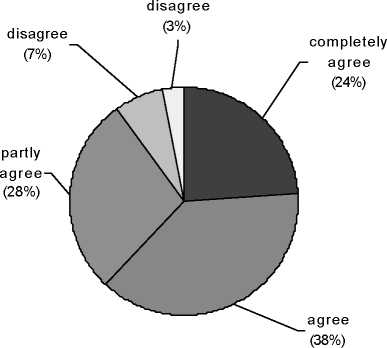Climate of Trust
In relationships of cooperation whose objective is innovation, sensitive technological or
business-related information has to be shared. Contractual safeguards do provide basic
guidelines for cooperation, but they only offer limited protection against abuses. Trust is thus
an indispensable basis for all cooperation. An adequate picture of the climate of trust in a
network can only be obtained from the participants themselves (Figure 3).
Figur 3
Participant rating of the confidence
within the network 2001
"There is trust and fairness between
the partners in the networks."
completely

Source: DIW Berlin and partners, questionnaire
from summer 2001.
DIW Berlin 2002
The majority of network partners state that the necessary climate of trust is either fully or
partially existent in their networks. Only approximately one-tenth of those questioned found
fault with the climate of trust in their network. On this point, evaluations vary relatively widely
among the networks. The average results obtained from a scaled assessment ranging from
poor (1) to excellent (5) was between 3.0 and 4.2. For all networks, the average was 3.8;
seven were more than .2 percentage points below the average and four were more than .2
percentage points above. The internal cohesiveness in these networks received a similar
assessment, in part being judged as in need of improvement, and in part as well developed.
10
More intriguing information
1. Migrant Business Networks and FDI2. The name is absent
3. Dual Track Reforms: With and Without Losers
4. Staying on the Dole
5. TLRP: academic challenges for moral purposes
6. The name is absent
7. The name is absent
8. CGE modelling of the resources boom in Indonesia and Australia using TERM
9. Cryothermal Energy Ablation Of Cardiac Arrhythmias 2005: State Of The Art
10. Self-Help Groups and Income Generation in the Informal Settlements of Nairobi